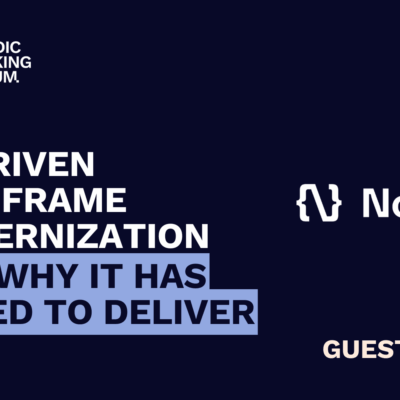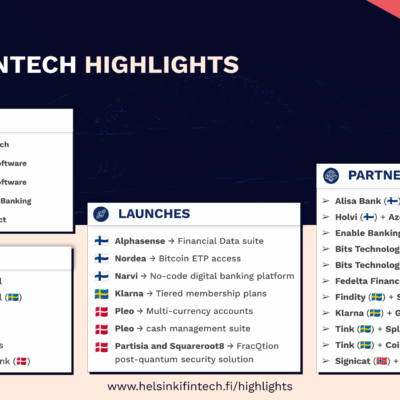ID Document verification complements local digital identity schemes
The digital landscape is evolving rapidly, placing unprecedented demands on businesses to adapt their identity verification methods. For years, Nordic and Baltic countries have relied on local digital identity schemes (eIDs), such as the Finnish Trust Network, SmartID, and Swedish BankID. New EUDI Wallets are also on the way, aiming to harmonise the digital identity space further.
However, there is an increasing need to verify end users’ identities in situations where eIDs are unavailable. Situations such as onboarding new users to eIDs, verifying the identity of foreign customers, or unlocking locked eID credentials highlight the demand for alternative identity verification methods.
ID document verification (eIDV) technologies are remote identity verification methods commonly used and preferred in countries where local eIDs are either unavailable or not widely utilised. These technologies are gaining significant traction across the Nordic and Baltic regions, particularly as a solution for identity verification in cases where end users lack access to eIDs.
This article explores the role of eIDV and why financial institutions and businesses are increasingly leveraging these technologies, even in countries with mature eID infrastructures.
What is ID Document and Biometric Verification or eIDV?
ID document and biometric verification is a digital identity proofing method that combines document scans with biometric checks. Using tools like video-based verification, photo capture, or NFC chip scanning, businesses can securely and efficiently verify a user’s identity.
This process is:
-
Quick & Easy – Typically completed in 30–45 seconds
-
Compliant – Fully automated or supported by human agent reviews for maximum accuracy and highest level of assurance
-
Global – Supports a wide variety of ID documents worldwide (e.g., Signicat VideoID supports 530+ ID documents in 155+ countries)
ID document verification is a core component of the broader digital identity ecosystem, complementing traditional ID proofing methods.
Why ID Document Verification Matters Now More Than Ever
The need for remote and secure identity verification has surged due to regulatory pressures, globalisation, and evolving customer expectations. While the use of local eIDs continues to grow, so does the adoption of ID document verification.
Customers expect quick and convenient interactions
Today’s digitally savvy users demand simple, remote experiences for services like unlocking eID credentials, opening bank accounts, completing KYC processes, or renting a car. Traditional approaches, like visiting a branch or emailing passport copies, fail to meet these expectations by a wide margin. Friction in these processes can result in lost customers and lower conversion rates.
There are already successful examples of eIDV adoption in the Nordic and Baltic markets. Local eID schemes like MitID (Denmark) and SmartID (Estonia, Latvia, Lithuania) already use ID document verification to seamlessly onboard new users.
Combat fraud with additional security layer
Fraudsters are continually finding new ways to outsmart identity verification systems. Although local eID schemes offer robust security, no system is completely immune to fraud.
ID document verification serves as an extra layer of security, complementing local eIDs. It is particularly useful in scenarios such as confirming high-value payments through a mobile app or signing a new consumer credit contract, ensuring enhanced protection and reliability. Biometric checks, liveness detection, and advanced anti-spoofing measures make it significantly harder for fraudsters to succeed, even if they have access to someone’s eID credentials.
Global coverage to support growth
Verifying the identities of international customers presents significant challenges for banks and financial institutions. In many cases, customers lack access to local eIDs, forcing businesses to rely on inefficient manual processes or requiring customers to visit a branch in person.
ID document and biometric verification solves this challenge by enabling banks to verify foreign customers remotely and quickly, without compromising customer experience, security, or compliance.
How ID Document Verification Works
ID document verification employs different technologies tailored to various use cases.
-
Image-based verification
The user takes a photo or uploads an image of their ID document and takes a selfie. The verification service compares the images to ensure authenticity and a match. This method suits lower-risk use cases. -
Video-based verification
The user scans their ID document in real-time via video streaming, followed by a biometric check to confirm their identity matches the document. To enhance security, the process often includes liveness detection to confirm the presence of a real person. Video-based verification is particularly well-suited for substantial and high-risk scenarios. -
NFC-based verification
The user scans the NFC chip of the passport or ID document, followed by a biometric check to confirm the identity matches the ID document.
These automated processes take 30–45 seconds, depending on the technology. For added assurance, human agent reviews can be included to meet the highest security standards.
Signicat: Leading the Way in Remote Identity Verification
At Signicat, we understand the complexities of digital identity proofing and offer expert guidance on selecting the ideal ID document verification technologies for your use case.
Signicat’s digital identity hub connects you to 35+ eID methods across Europe, while the advanced ID document verification solutions enable secure and reliable remote identity verification in more than 155 countries.
Designed for seamless integration, Signicat’s solutions help your business achieve a secure, scalable, and efficient identity verification process. Don’t let outdated methods drive customers away. Discover how Signicat can transform your identity verification processes with ID document and biometric verification solutions.
Find out how Signicat can support your business today.
Author: Riku Louho, Signicat



